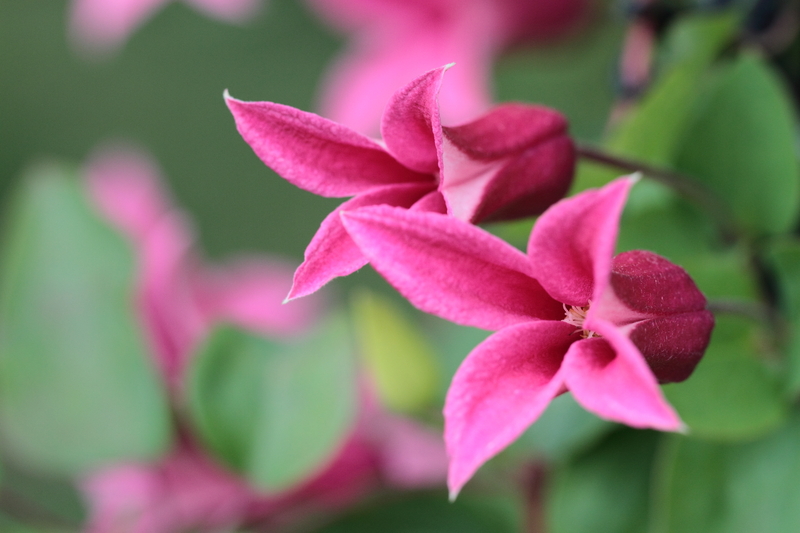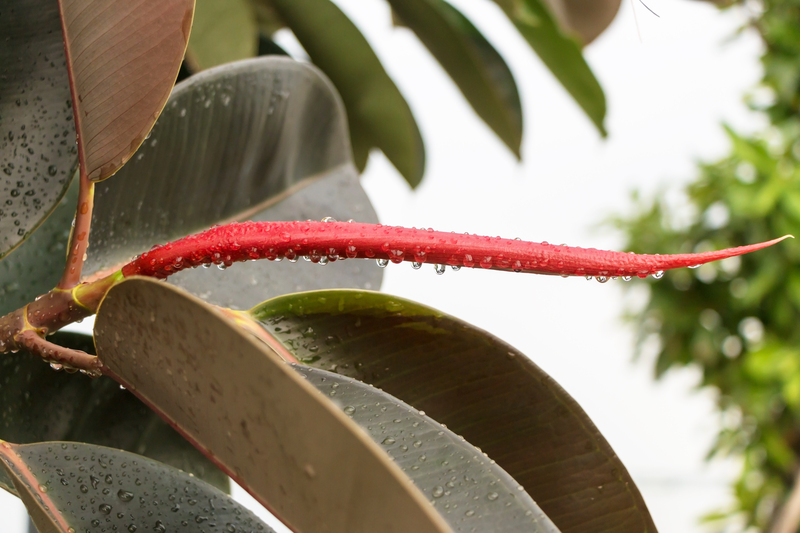Unlock the Secrets to Keeping Your Lawn Green Through Summer Droughts
Scorching summer months challenge every homeowner's dream of a lush, vibrant green lawn. Droughts can test even the most meticulously maintained landscapes, leaving parched, brown patches that seem impossible to revive. But don't worry--there are proven secrets and smart techniques that can help you keep your lawn beautiful, even during the driest spells. In this comprehensive guide, we'll unlock the best strategies for keeping your lawn green through summer droughts, offering science-backed solutions, practical tips, and long-term practices for a resilient, enviable yard.
Why Do Lawns Suffer in Summer Droughts?
Understanding the mechanics behind drought stress is the first step toward effective lawn care. During hot, dry periods, grass loses moisture faster than it can absorb through its roots. Without enough water, the grass enters a dormant state, turning brown and crispy. Intense sunlight, high temperatures, and sometimes watering restrictions exacerbate the problem, making lawn care more challenging.
- Lack of rainfall increases soil dryness, stressing root systems.
- Elevated temperatures speed up evaporation from soil and grass blades.
- Watering limitations (imposed by local councils during droughts) can hinder regular irrigation.
Knowing the root causes helps you prepare proactive solutions to maintain your lawn's lush appearance.

Choosing the Right Grass Types for Drought Resistance
Not all grasses are created equal. Some varieties thrive in hot, dry climates, drawing less water while staying green and healthy. If you're establishing a new lawn or overseeding an existing one, consider switching to drought-tolerant grass species.
Top Drought-Resistant Grasses
- Bermuda Grass: Popular in southern climates for its deep root system and rapid recovery from drought stress.
- Buffalo Grass: Native to the prairies, this low-water grass forms a lush, dense turf that thrives in full sun.
- Zoysia Grass: Strong drought tolerance, creates a thick carpet that resists weeds and disease.
- Tall Fescue: Tolerates heat and has deep roots for effective water absorption.
Making a smart choice on grass variety lays the foundation for keeping your lawn green throughout summer droughts.
Mastering Watering Techniques in Drought Conditions
Water is precious--especially during drought season. Smart irrigation strategies ensure every drop counts, providing enough moisture without waste.
Timing is Everything
- Water early in the morning: Aim to water between 4 AM and 8 AM. This reduces evaporation loss and allows grass blades to dry out, preventing fungal diseases.
- Avoid evening watering: Wet lawns overnight can encourage diseases. Avoid mid-day watering to reduce evaporation.
How Much Should You Water?
Even during a drought, lawns typically need about 1 inch of water per week, including rainfall. Use a rain gauge or a shallow container to measure irrigation. In short spurts, deep watering encourages grass roots to grow downward, enhancing drought resistance.
- Water deeply, but infrequently: This promotes hardy, drought-resilient root systems.
- Monitor local regulations: Some regions may limit watering days or hours.
Soil Strategies for Summer Lawn Survival
Your grass is only as healthy as the soil beneath it. Proper soil management makes a significant difference in your lawn's drought resistance.
Aeration Unlocks Deeper Root Growth
- Core aerate your lawn at least once a year--preferably in the spring or early fall.
- This process relieves soil compaction, allowing water, oxygen, and nutrients to penetrate deeply.
Improve Soil with Organic Matter
- Top-dress with compost after aerating: This helps sandy soils retain moisture and improves clay soil drainage.
- Mulching grass clippings: Recycle nutrients naturally, conserving soil moisture and reducing evaporation.
Optimize Soil pH and Structure
- Test your soil every two to three years and adjust with lime or sulfur as needed to keep pH balanced (ideally between 6.0 and 7.0 for most grasses).
- Healthy, loose soil supports robust root networks that weather drought conditions far better.
Mowing Methods That Protect Your Lawn in Drought
How and when you mow your lawn has a profound impact on drought survival. Adjust your mowing habits during dry spells to minimize stress on your turf.
- Raise the mower blade: Cutting grass too short reduces root length and increases sun exposure. Aim for grass heights of 3-4 inches during summer.
- Leave clippings on the lawn: Known as grasscycling, this naturally returns moisture and nutrients to the soil.
- Sharpen mower blades regularly: Dull blades tear grass, increasing moisture loss and brown tips.
- Avoid mowing during extreme heat or drought stress to prevent additional shock.
Fertilizing and Lawn Treatments: What Really Helps?
While lush lawns rely on nutrients, over-fertilizing can do more harm than good during drought conditions.
- Cut back on synthetic fertilizers during drought: They demand more water and can burn stressed turf.
- Use slow-release or organic fertilizers: These supply nutrients gradually, supporting steady root growth and microbe health.
- Apply soil-wetting agents: These help water penetrate and distribute evenly within the root zone.
Lawn Health Supplements
- Consider using humic acid or mycorrhizal fungi inoculants to encourage nutrient uptake and moisture retention.
- Seaweed and kelp extracts: These natural foliar sprays improve drought stress tolerance.
Lawn Care Mistakes to Avoid During Summer Droughts
Even well-intentioned actions can backfire if not tailored for drought survival.
- Overwatering: Using too much water can suffocate roots and encourage fungus.
- Frequent, shallow sprinkling: This trains shallow roots, making grass more vulnerable to heat.
- Heavy fertilizing: Can burn grass, leading to scorched patches.
- Mowing too short (scalping), which leaves grass weak and susceptible.
- Ignoring local water restrictions can result in fines and ecological harm.
Sustainable Practices for Long-Term Lawn Resilience
Adopting long-term, sustainable lawn care practices is the ultimate secret to enduring green grass throughout repeated drought cycles.
Landscape with Native Plants and Groundcovers
- Integrate drought-resistant groundcovers like sedum or creeping thyme in high-sun, low-traffic zones.
- Design with native grasses and wildflowers: Reduce water needs while attracting pollinators.
Install Smart Irrigation Systems
- Drip irrigation and soaker hoses target root zones and minimize water loss from evaporation and runoff.
- Use weather-based timers and soil moisture sensors to fine-tune watering automatically based on real-time conditions.
Regular Lawn Monitoring
- Keep a keen eye out for early signs of stress: bluish-grey color, wilting, or footprints that remain visible.
- Intervene early with corrective watering or soil amendments to prevent small issues from escalating.
Embracing a Drought-Ready Lawn Ethos
Maintaining a green lawn during summer droughts isn't about fighting nature--it's about working with it. By understanding the unique challenges of your climate, implementing resilient landscaping choices, and caring for your soil and turf with purposeful practices, a vibrant and sustainable green lawn is within your reach--even during the harshest droughts.
- Choose drought-tolerant grasses for new lawns or overseeding.
- Perfect your watering schedule and methods for maximum efficiency and health.
- Prioritize soil health, aeration, and organic amendments.
- Raise mowing heights and avoid over-fertilizing.
- Upgrade your irrigation system for best-in-class water management.
- Consider a mixed landscape with native plants and ground covers.
Your lawn can stay green, healthy, and beautiful--no matter how dry the summer gets--if you unlock these secrets and make them part of your seasonal routine.

Frequently Asked Questions: Keeping Your Lawn Green Through Drought
1. How often should I water my lawn during a drought?
Water deeply but less frequently--about once or twice a week--applying enough to soak the root zone (approx. 1 inch per week including rainfall). Always follow local water restrictions.
2. Can I fertilize my lawn in a drought?
Limit fertilization during drought. If you must, choose slow-release or organic fertilizers to avoid burning your lawn or increasing water demand.
3. Will my brown, dormant lawn recover after drought?
Most grasses can bounce back from drought dormancy if the root system survives. Resume regular care and water gradually when rains return, but avoid overwatering to prevent root rot.
4. Should I aerate my lawn during summer?
Aerate in the spring or fall for best results. Avoid aerating during extreme heat or drought, as it can stress already suffering turf.
5. What's the best grass for hot, dry summers?
Bermuda, Buffalo, Zoysia, and Tall Fescue are top drought-tolerant choices, with fine fescues performing well in shady areas.
Conclusion
Keeping your lawn green through summer droughts is more than luck--it's a blend of smart planning, adaptive care, and a commitment to sustainable practices. By understanding your grass and soil, refining your watering and mowing techniques, and adopting drought-friendly landscaping, you can achieve a verdant, thriving lawn that's the envy of your neighborhood--all while staying earthwise, even in the toughest conditions.
Now that you've unlocked these secrets, your green, resilient summer lawn is just a season away!



